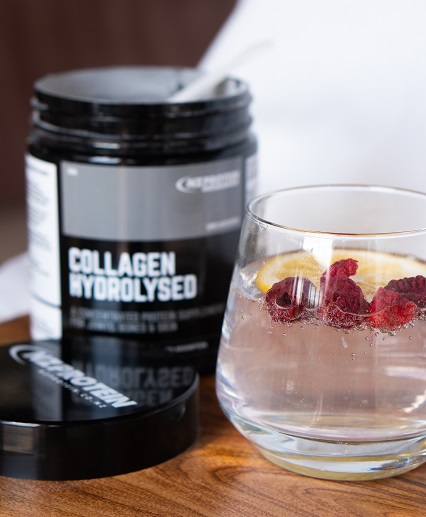
Collagen supplements are all the rage these days but did you know there are different types? The type you need will depend on what you’re taking it for. Some products are great for creaky joints while others will bring the bounce back to your skin. Before you spend your next paycheck on the newest collagen gummies, make sure to educate yourself first. This blog will explain the different types of collagen and which one is best for you.
What is Collagen?
Collagen is a type of protein naturally produced by your body. The word originates from Greek and means “gum producing”. Essentially, collagen is the glue that holds your body together. You can find it in your skin, muscles, tissues and tendons. Unfortunately, from the age of 20, we produce 1% less collagen every year. This is why our skin gets wrinkly and our joints start to hurt as we age. If you want to combat this deterioration, supplementary collagen can help. Although these products can’t work miracles, they can bring some elasticity back to your skin and improve your joint health. The type of collagen you take will depend on what you want to achieve. There are over 28 types of collagen but Type I, II, and III are the main ones. The best kind for you will depend on whether you are supplementing for skin or joint health.

Type I
Type I is the most abundant type of collagen. You’ll find it absolutely everywhere. Bone, tendons, cartilage and especially skin. This is the type you should be taking if you are trying to minimise wrinkles. Type I collagen is essentially scaffolding for your skin. Without it, we will look like an old wrinkly raisin. Taking Type I collagen in the form of an oral supplement has been scientifically proven to reduce signs of ageing. One experiment found that participants who took Type I collagen for 12 weeks had firmer skin than those who took a placebo. This finding has been replicated in plenty of other studies too. Collagen supplementation measurebly improves skin elasticity and hydration. For those who care about skin appearance and have the money to afford supplements, a Type I collagen product is worth getting. Don’t just take our word for it. Try supplementing for at least 12 weeks and see how you go. Since there are very few reported side effects from taking collagen, you have nothing to lose.

Type II
Type II collagen is the kind typically found in elastic cartilage, bone and other connective tissues. Elastic cartilage is the rubber-like substance found in our joints. Without enough of this cushioning, your bones will rub together when you move. This can be excruciatingly painful. Older people are far more susceptible to joint pain as a result of their diminished collagen production. Luckily, supplementation can make a huge difference. Research shows that taking Type II collagen daily can reduce pain levels and improve joint function. This study in particular tested the effects of supplements on people with knee osteoarthritis. They found that those who took Type II collagen for 180 days reported improved quality of life and had better range of motion in the affected joint. Although collagen is not prescribed treatment for osteoarthritis, it can make a marked difference to your symptoms. If joint pain is getting in the way of you living your best life, keep your eyes peeled for Type II.

Type III
Type III collagen is less prevalent in the body compared to the first two. You will find the majority of it in your muscles, arteries, gut lining and organs. Although it’s less common, it still plays an important role in your body. Types I and III work alongside each other to improve the elasticity of skin. This is why many supplements use a combination of the two kinds. Very little research has been done on Type III exclusively. We do know that it is only found in bovine collagen, not marine. We also know that taking a combination of Type I and III can make a noticeable difference to your appearance. Supplementing these two together will strengthen your hair, skin, nails and bones. If your main concern is maintaining a youthful glow, then look for a product containing both Type I and III.

Conclusion
Although there are 25 more types of collagen, the first three are the most important to look out for. While you can get collagen from foods like fish and beef, consuming enough through diet is not always feasible. If you are concerned with getting the right amount you can consider supplementation. Research shows that taking it regularly does actually make your skin bouncier and your joints more supple. Just make sure you invest in the right type. A combination of Types I and III is great for reducing wrinkles. For those wanting to minimise joint pain, Type II is for you. Always do your research before buying new supplements. Educating yourself is the best way to ensure your hard earned dollars don’t go down the drain.
